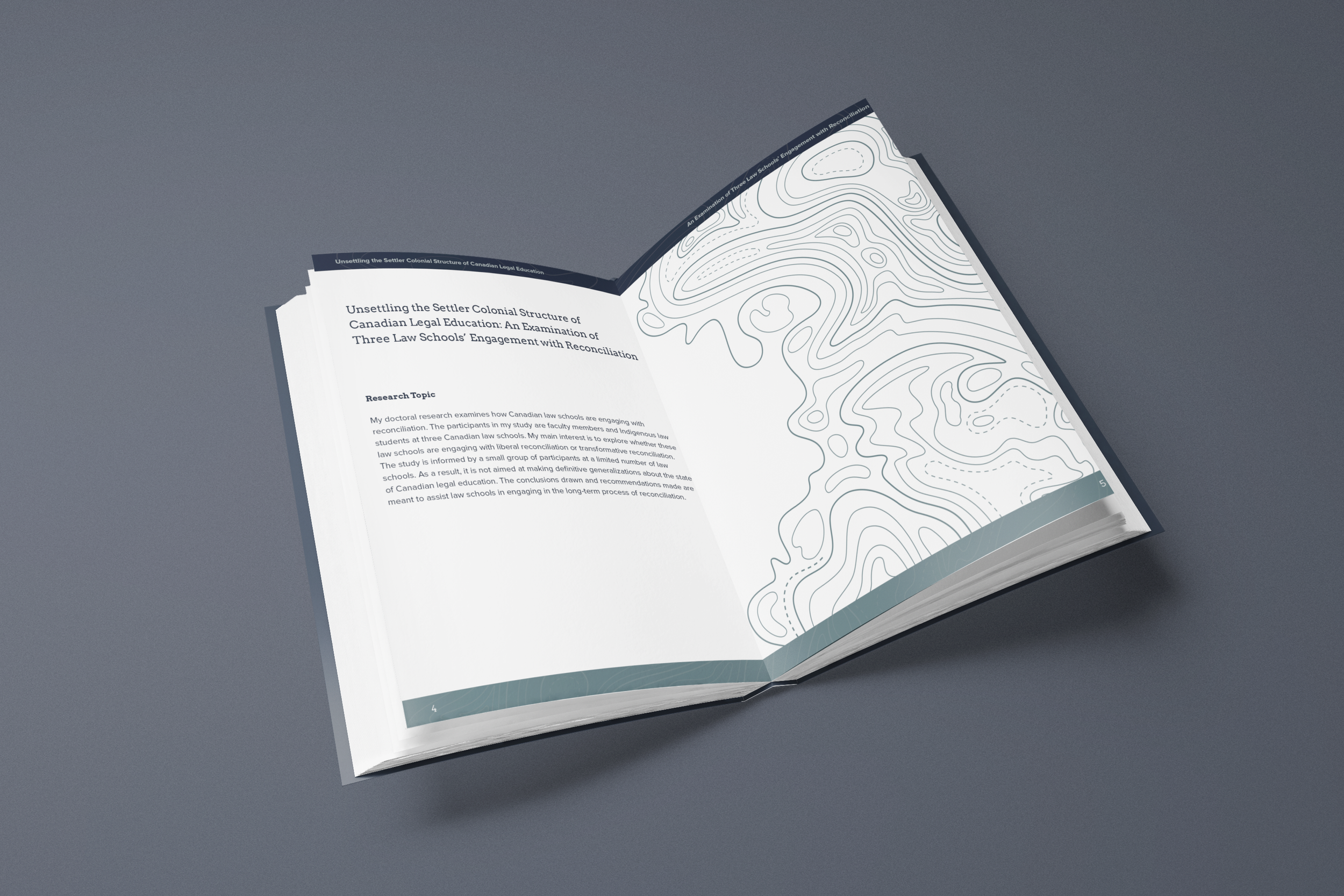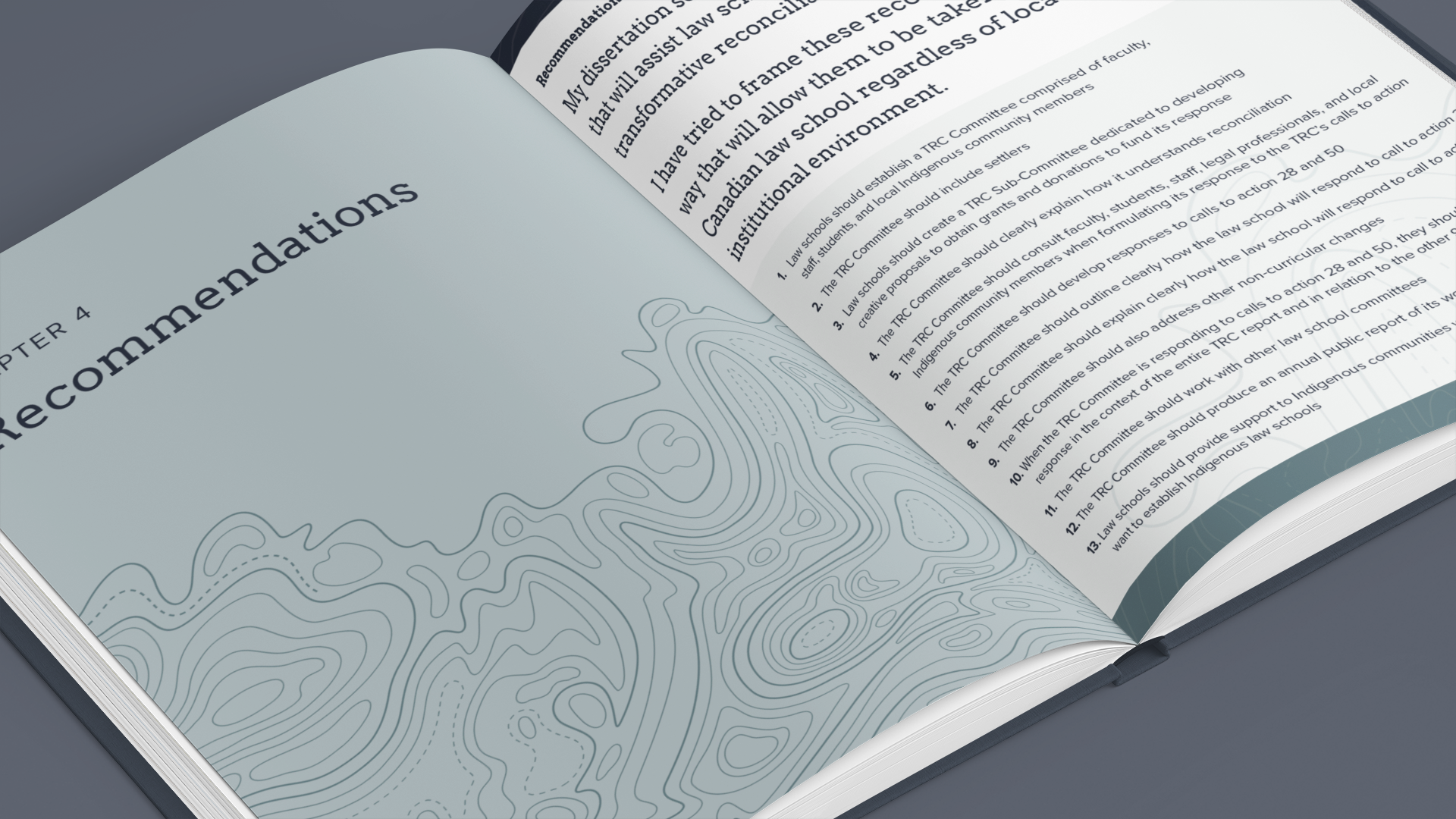Katie Wilhelm
Designer and Consultant
Designing a Tool for Reconciliation in Canadian Law Schools
“Katie was a joy to work with. She’s organized, talented, and passionate about her work... I highly recommend Katie to anyone looking for a skilled graphic designer and marketing consultant!”
Unsettling the Settler Colonial Structure of Canadian Legal Education: An Examination of Three Law Schools’ Engagement with Reconciliation
Written by Kory Smith, J.D., B.A. and Designed by Katie Wilhelm, RGD
About the Research
This doctoral research examines how Canadian law schools are engaging with reconciliation. The participants in the study are faculty members and Indigenous law students at three Canadian law schools. The main interest is to explore whether these law schools are engaging with liberal reconciliation or transformative reconciliation.
The study is informed by a small group of participants at a limited number of law schools. The conclusions drawn and recommendations made are meant to assist law schools in engaging in the long-term process of reconciliation.
The Report Design
Reconciliation Tool
The objective of the report design was to create an engaging report design for Canadian law schools, legal organizations, and Indigenous communities interested in implementing reconciliation into law practices.
Accessible Design
It was important to design a professional and accessible document. This report design displays the content in a way that is easy to absorb by utilizing ‘key highlights’ areas, pull-quotes, and organizing the content into chapters. The document is designed to be shared in both print and digital formats. The content design is flexible and can adapt to many uses including social media posts, infographics, or brochures.
Topography Illustrating Colonialism
The design uses an illustrative element of organically shaped lines to represent topography lines. Topography lines are used to map the shape of the Land. The use of this illustrative element in the report represents the imaginary borderlines created through colonialism. This design also represents mapping the problems and solutions behind settler colonialism, illustrating the report’s content.
View the Report
“The core research question is: Are law schools engaging with the liberal approach to reconciliation which maintains the status quo and reproduces colonial relations, or are they engaging with the transformative approach to reconciliation which has the potential to transform oppressive relations?”

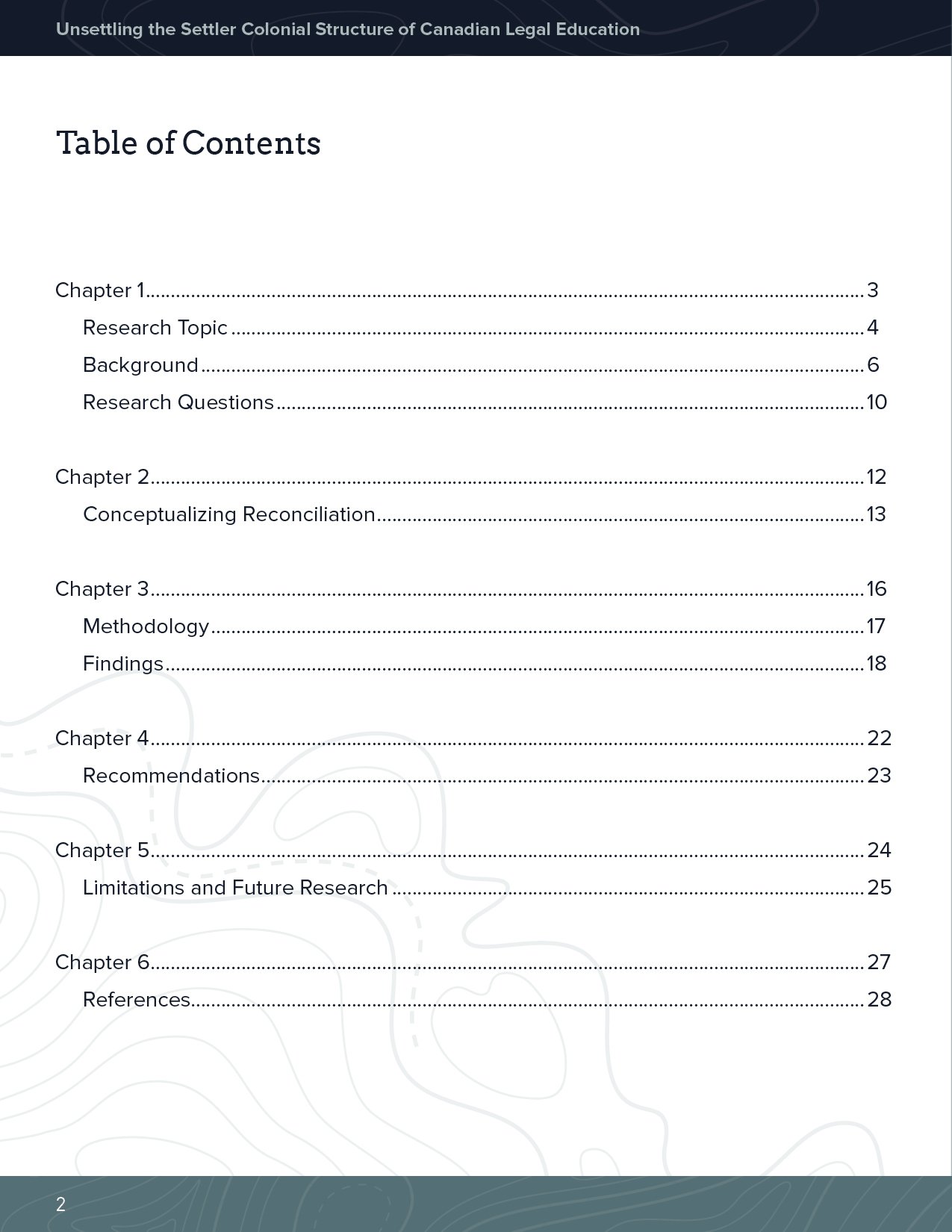
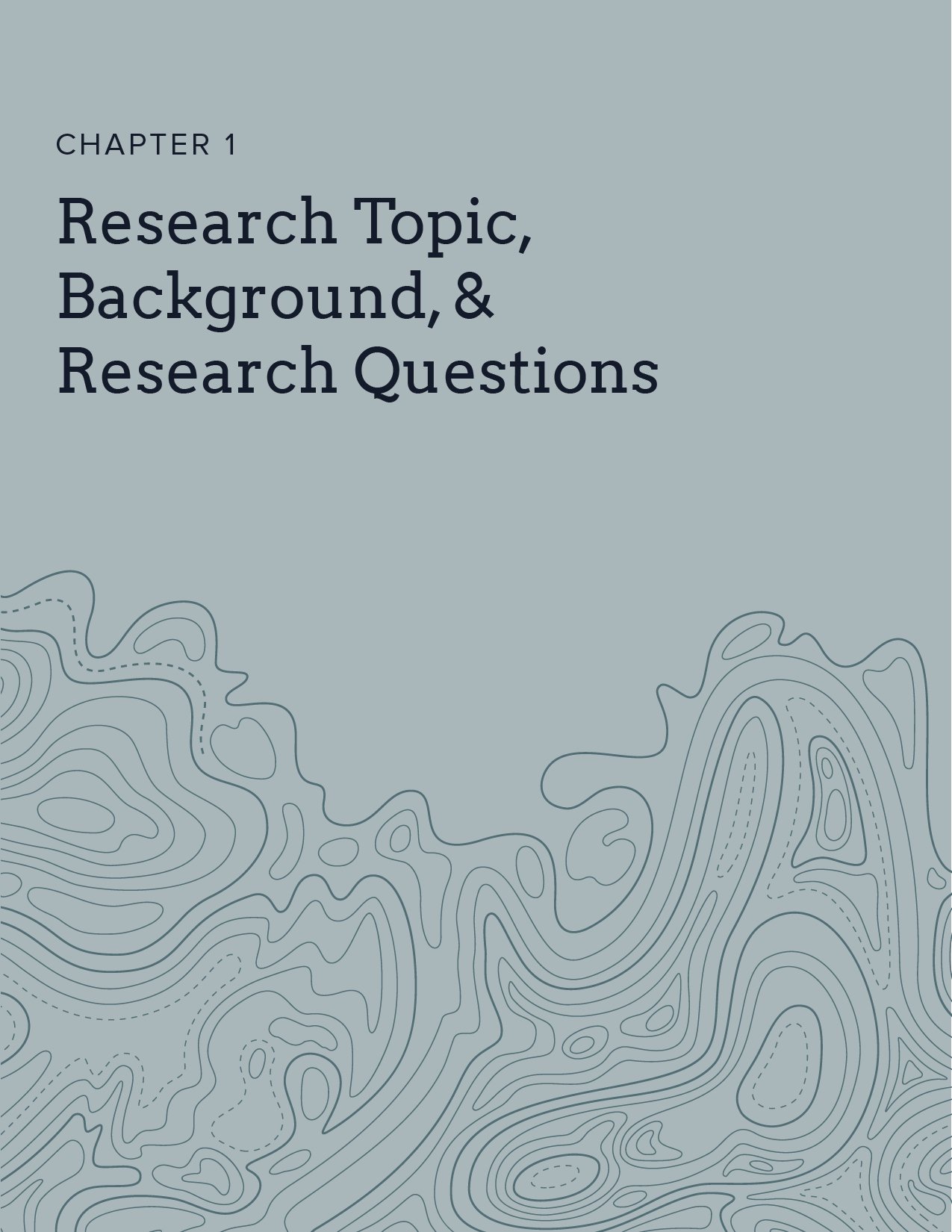
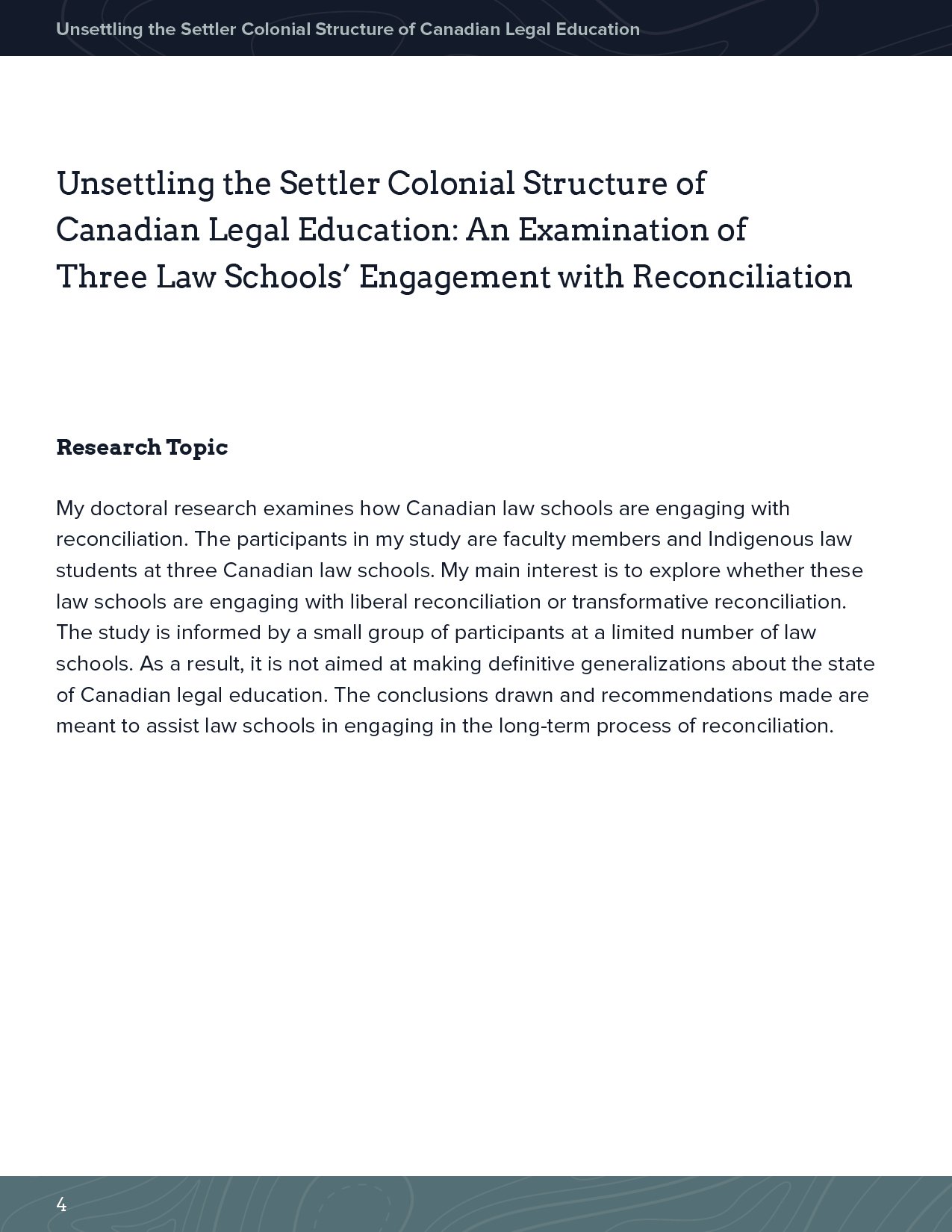

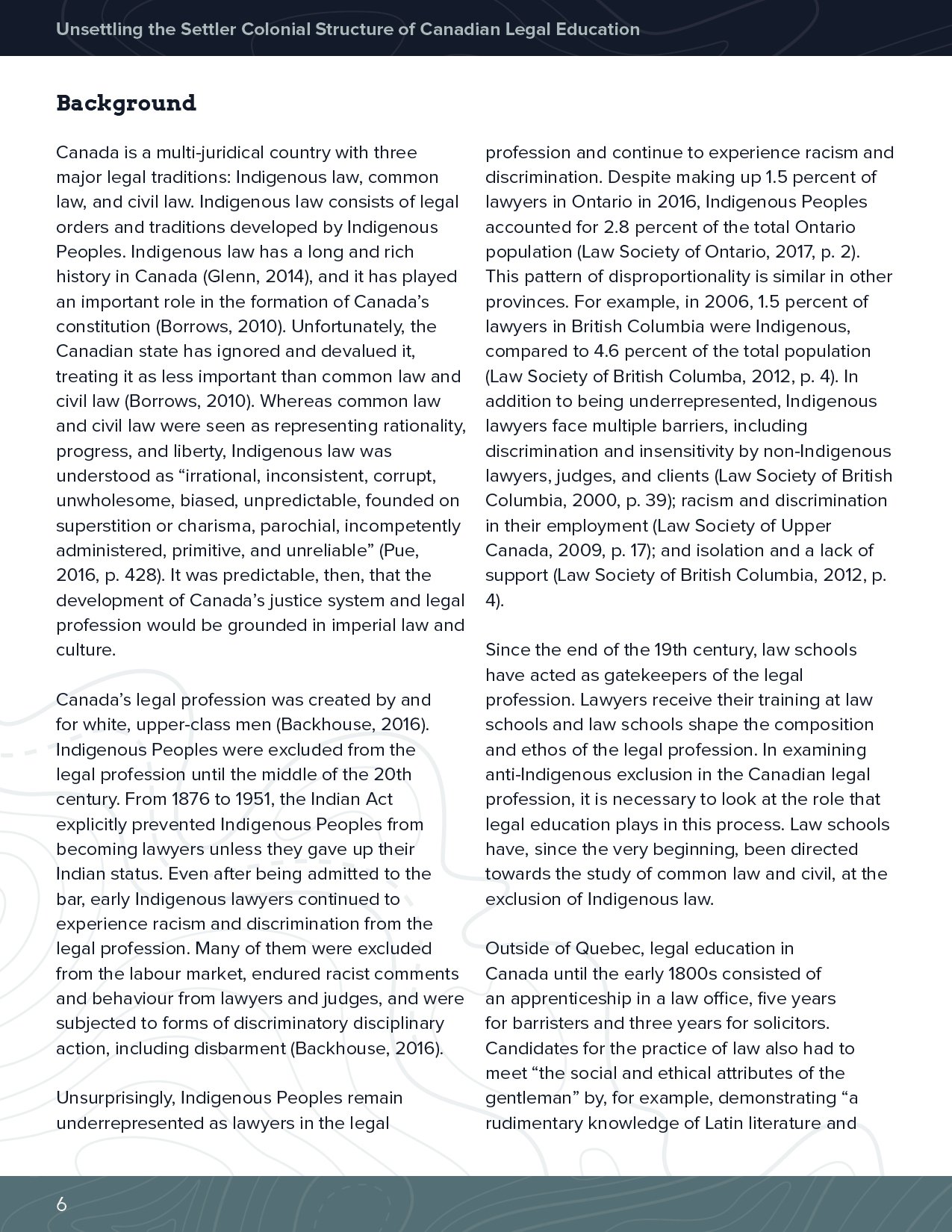
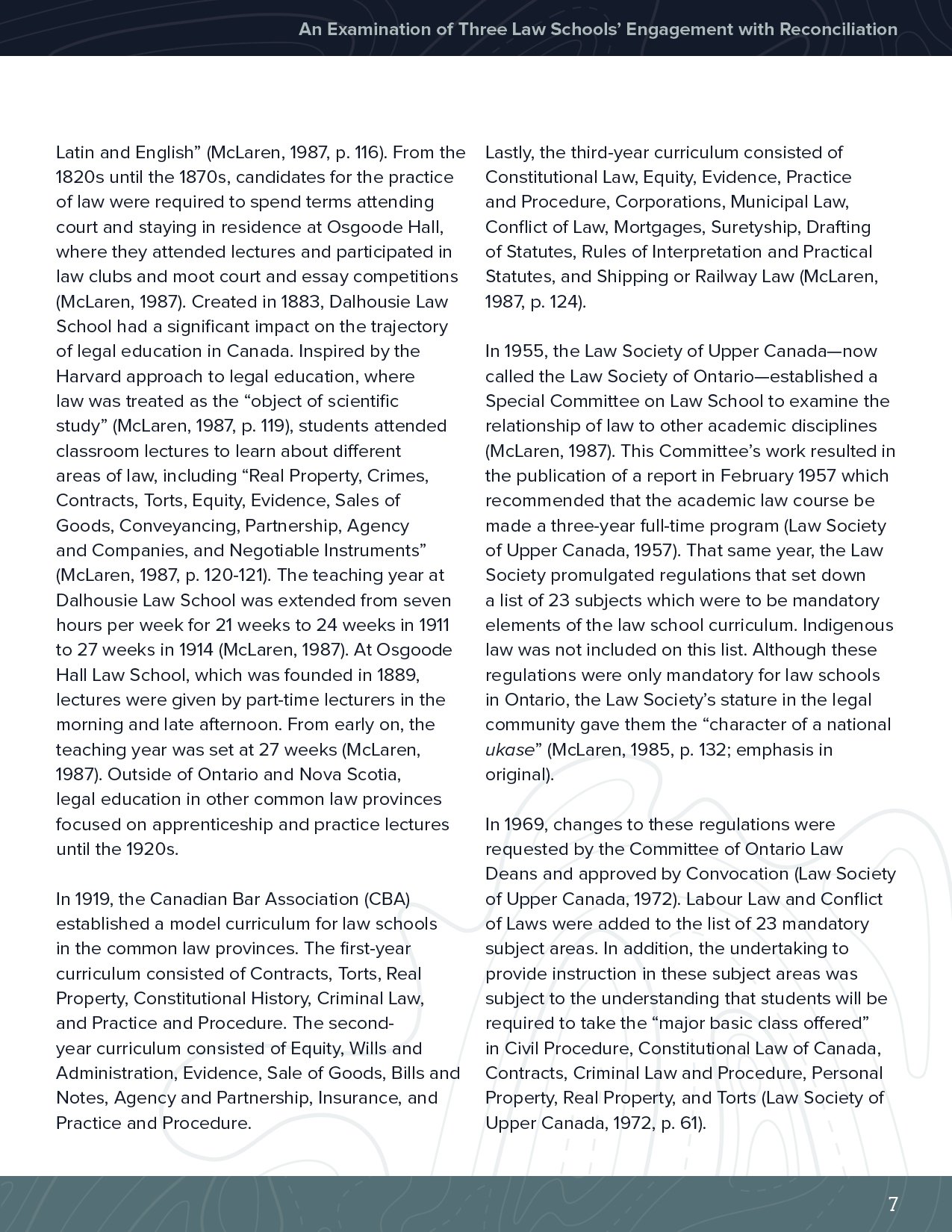
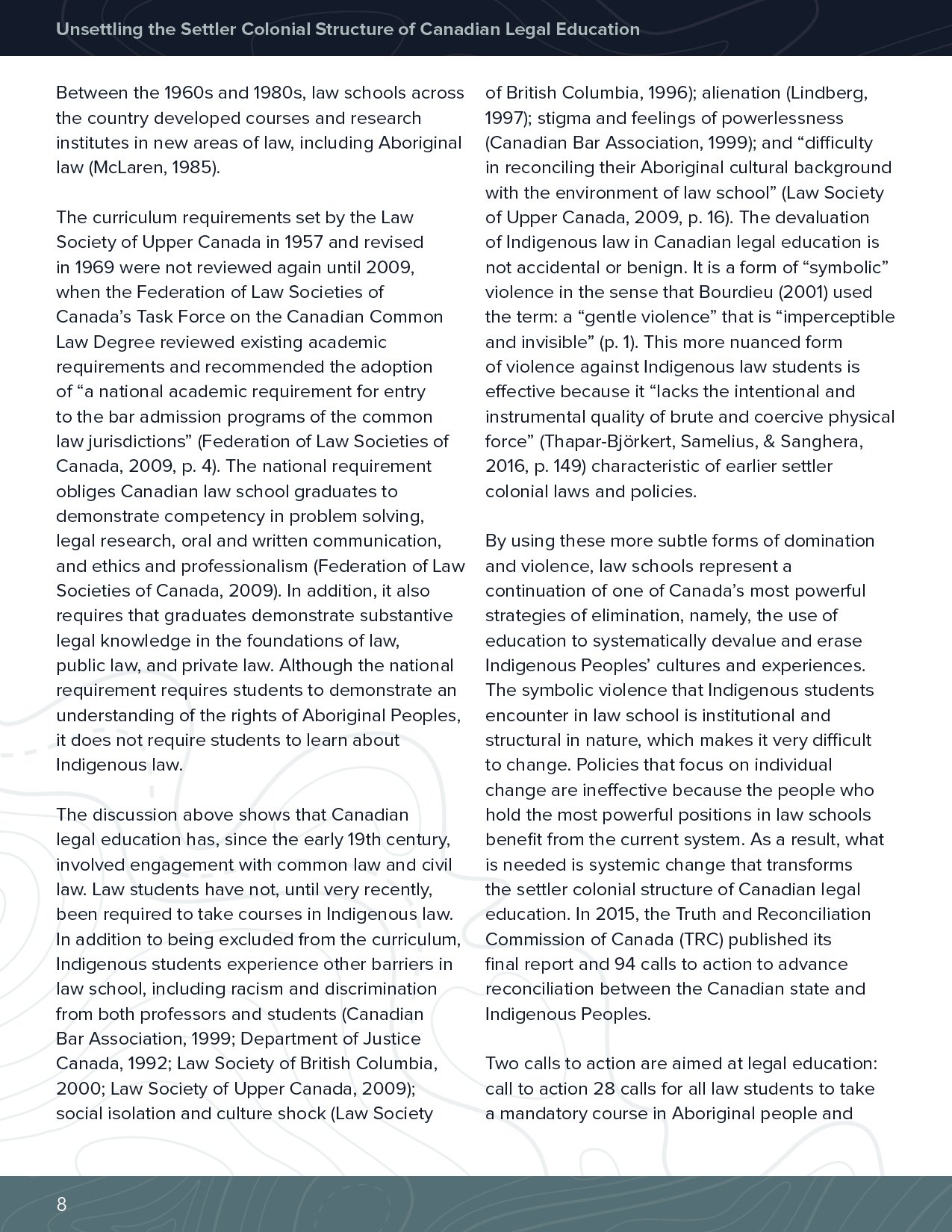
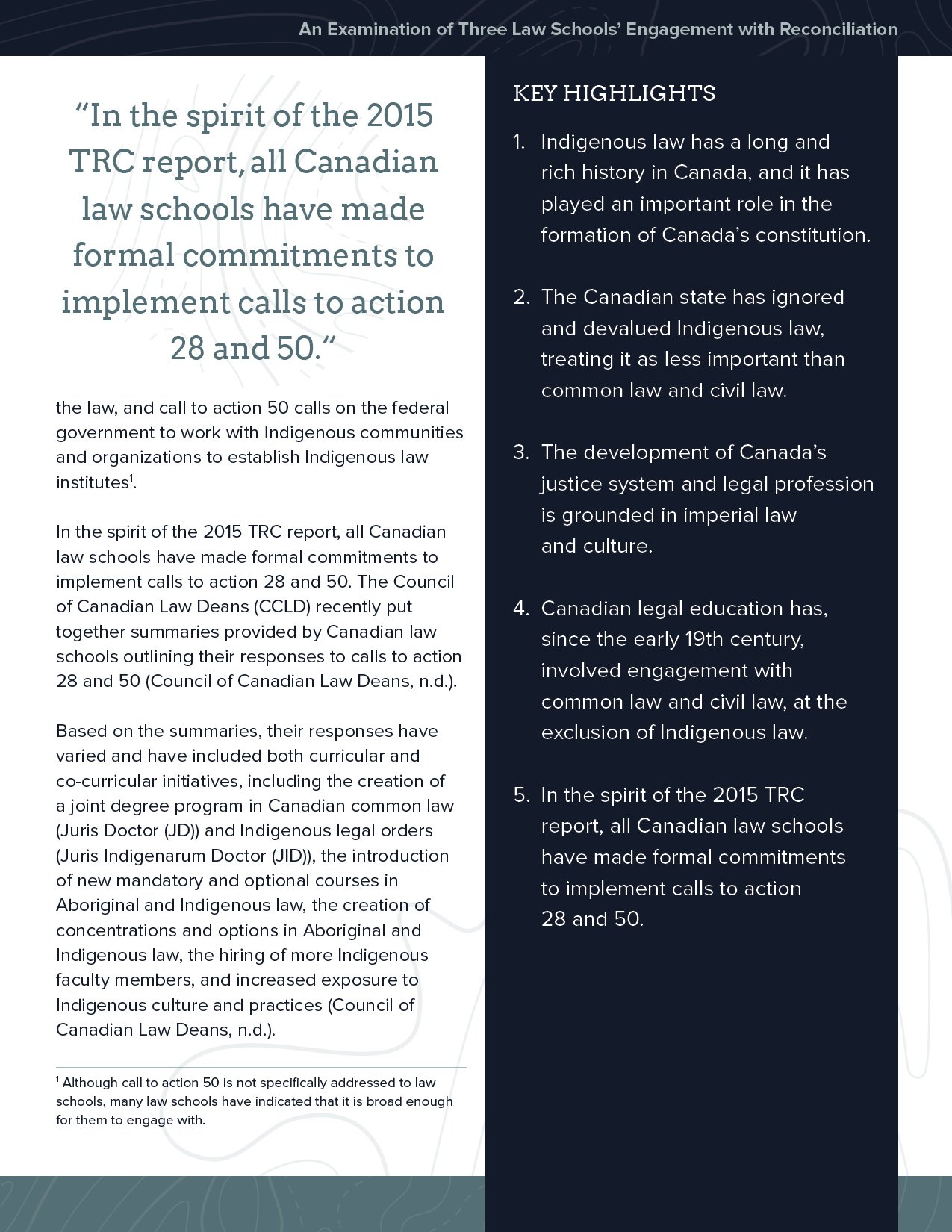
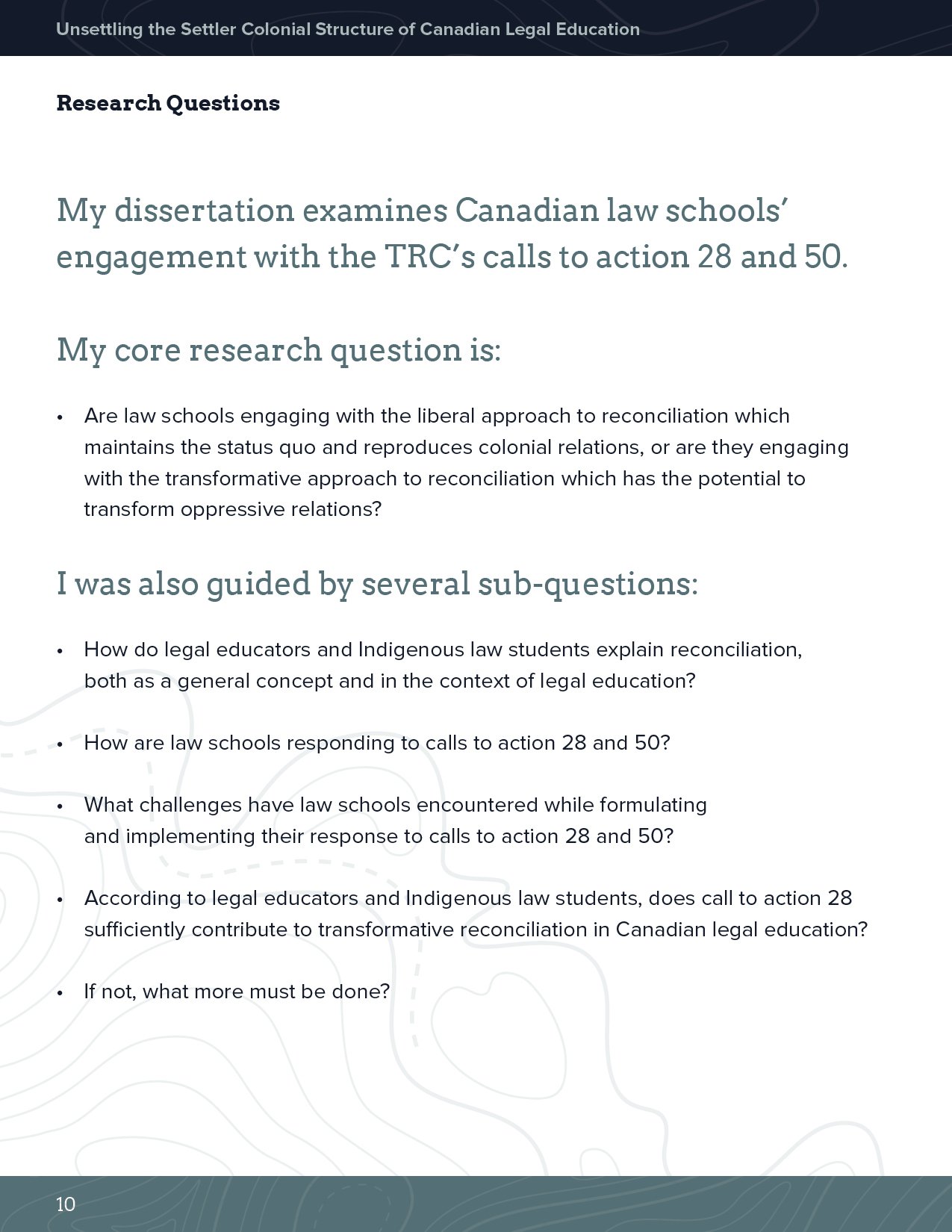
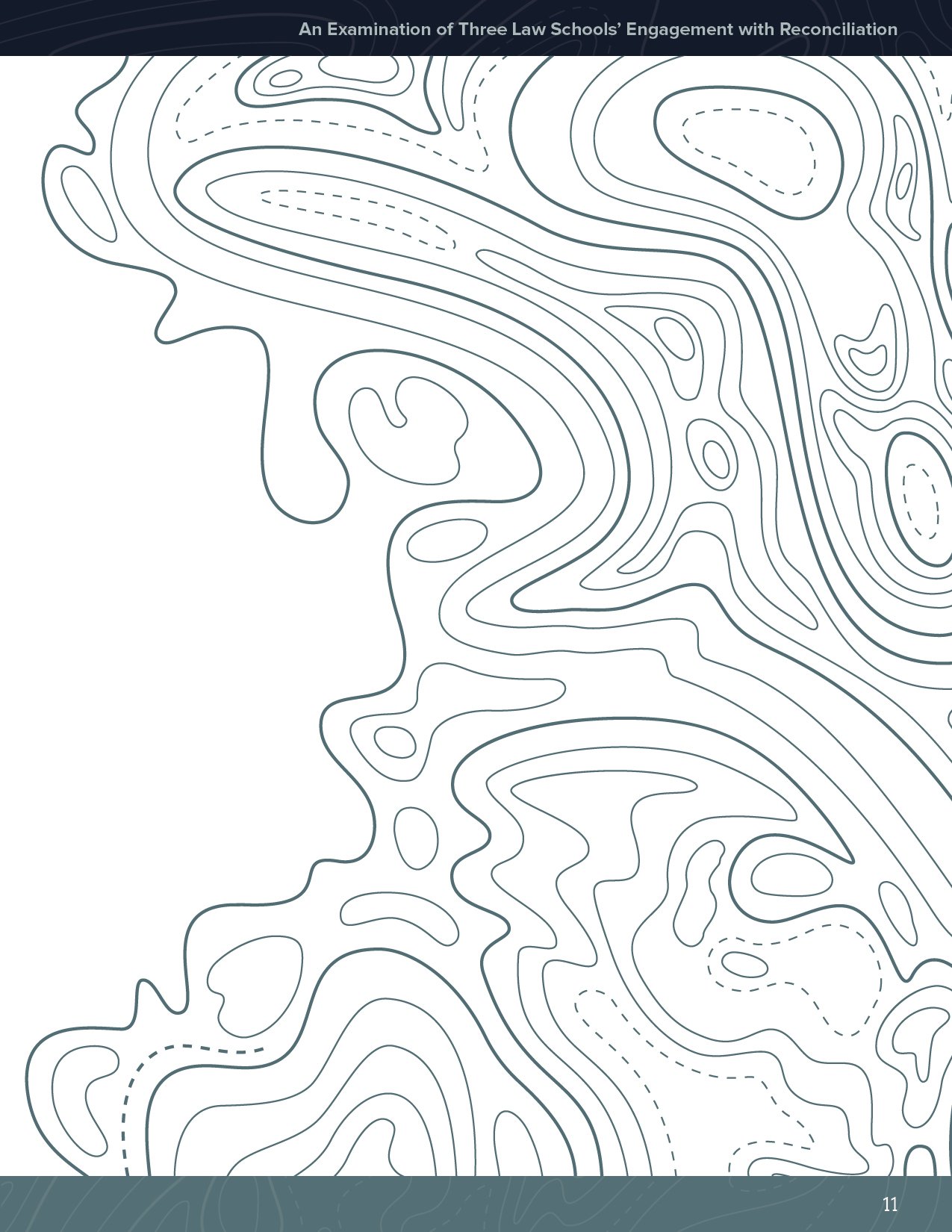
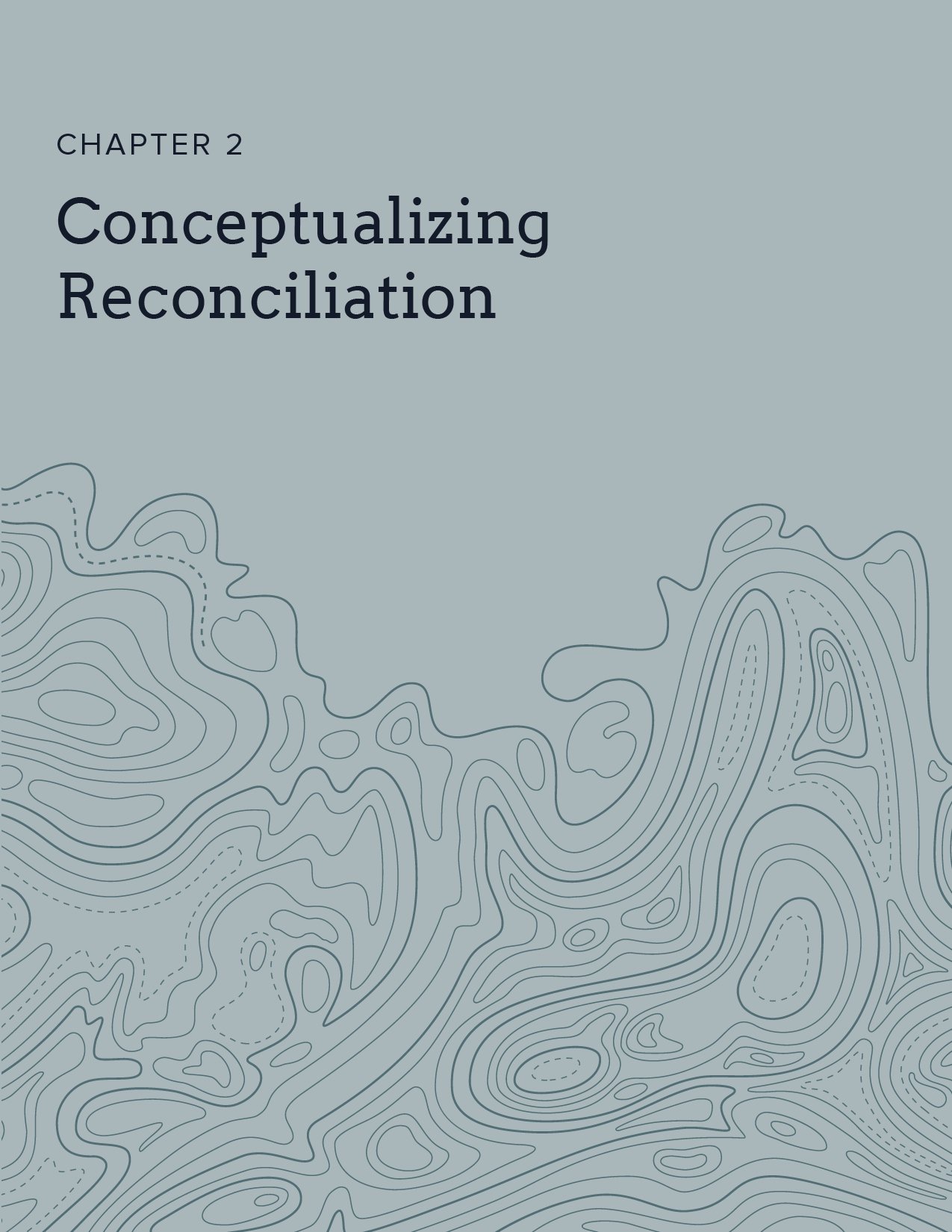

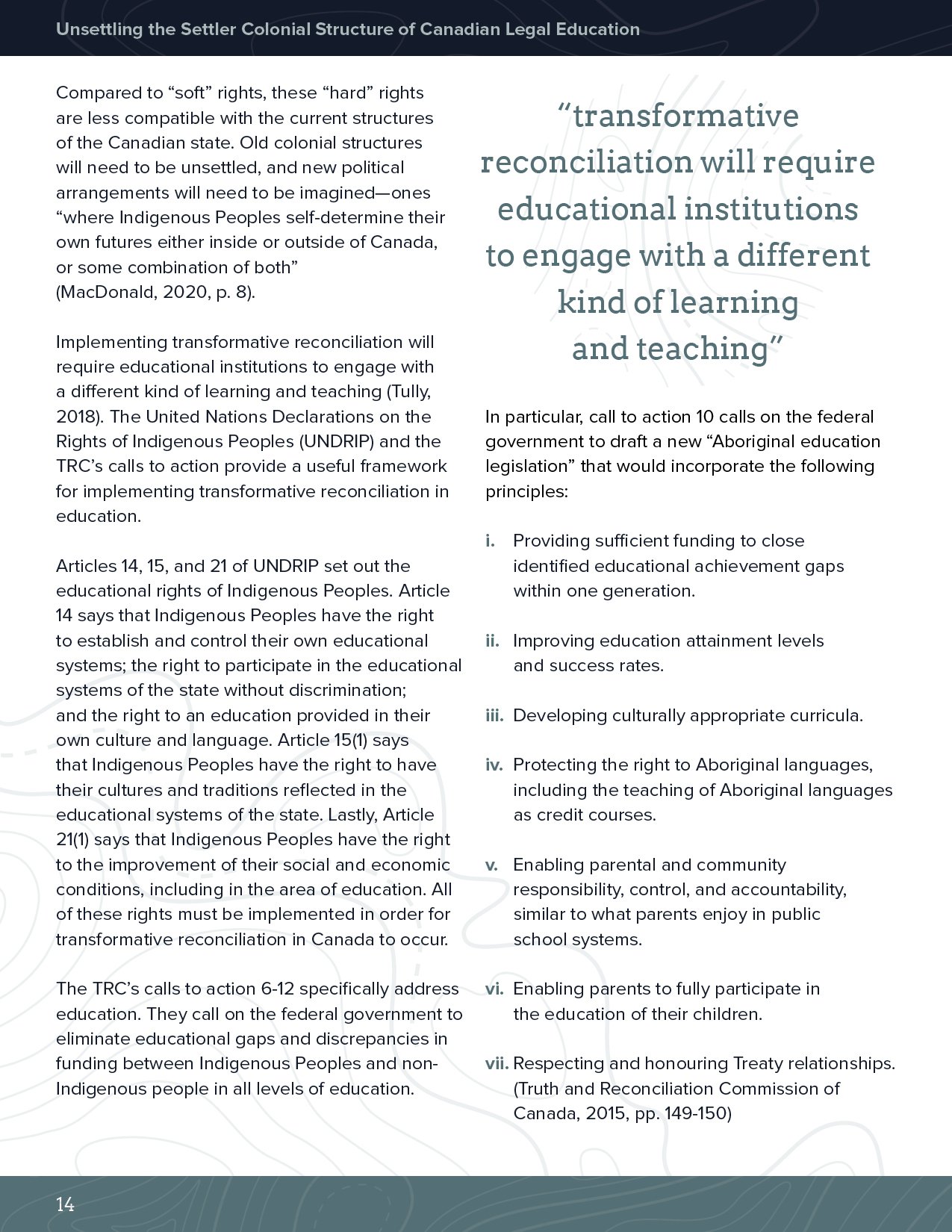
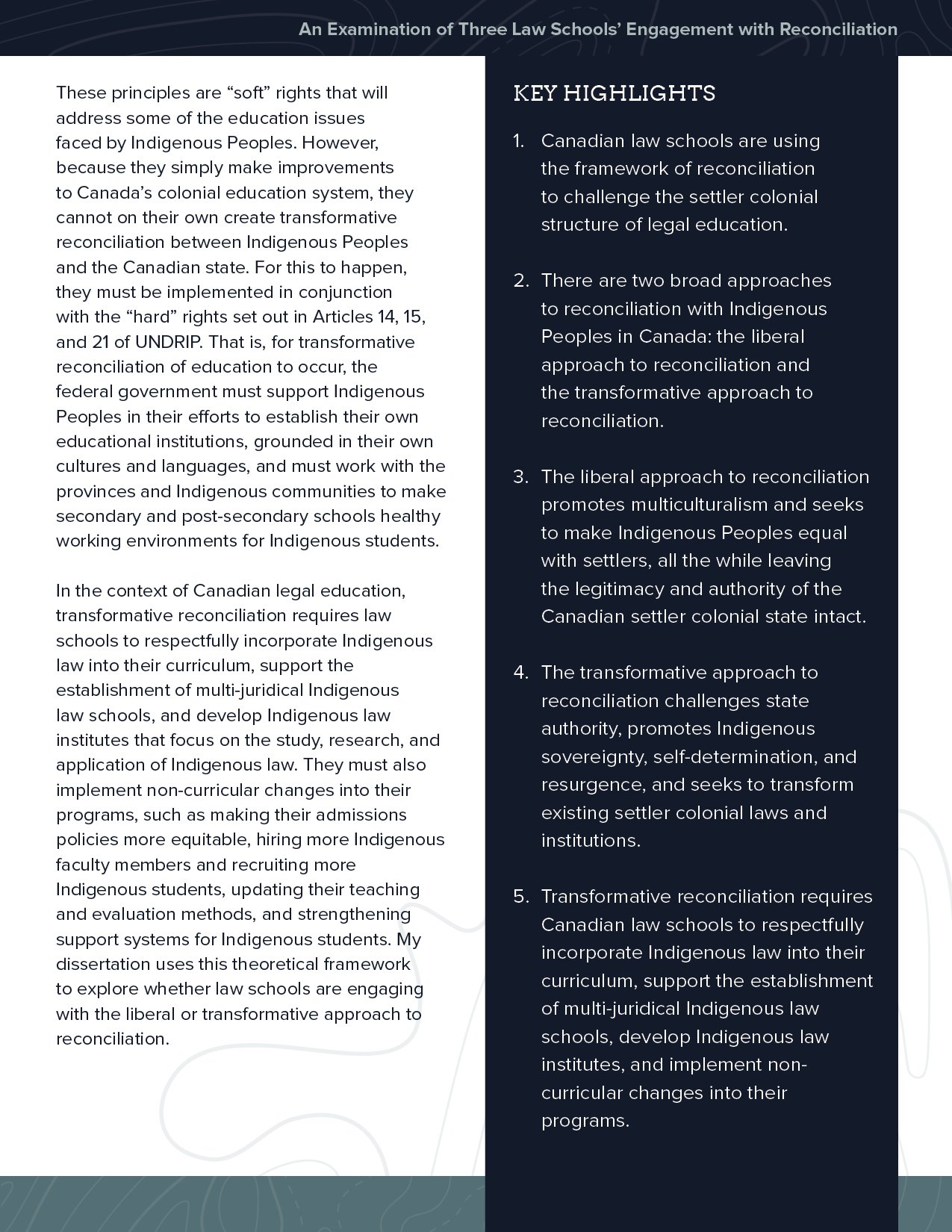
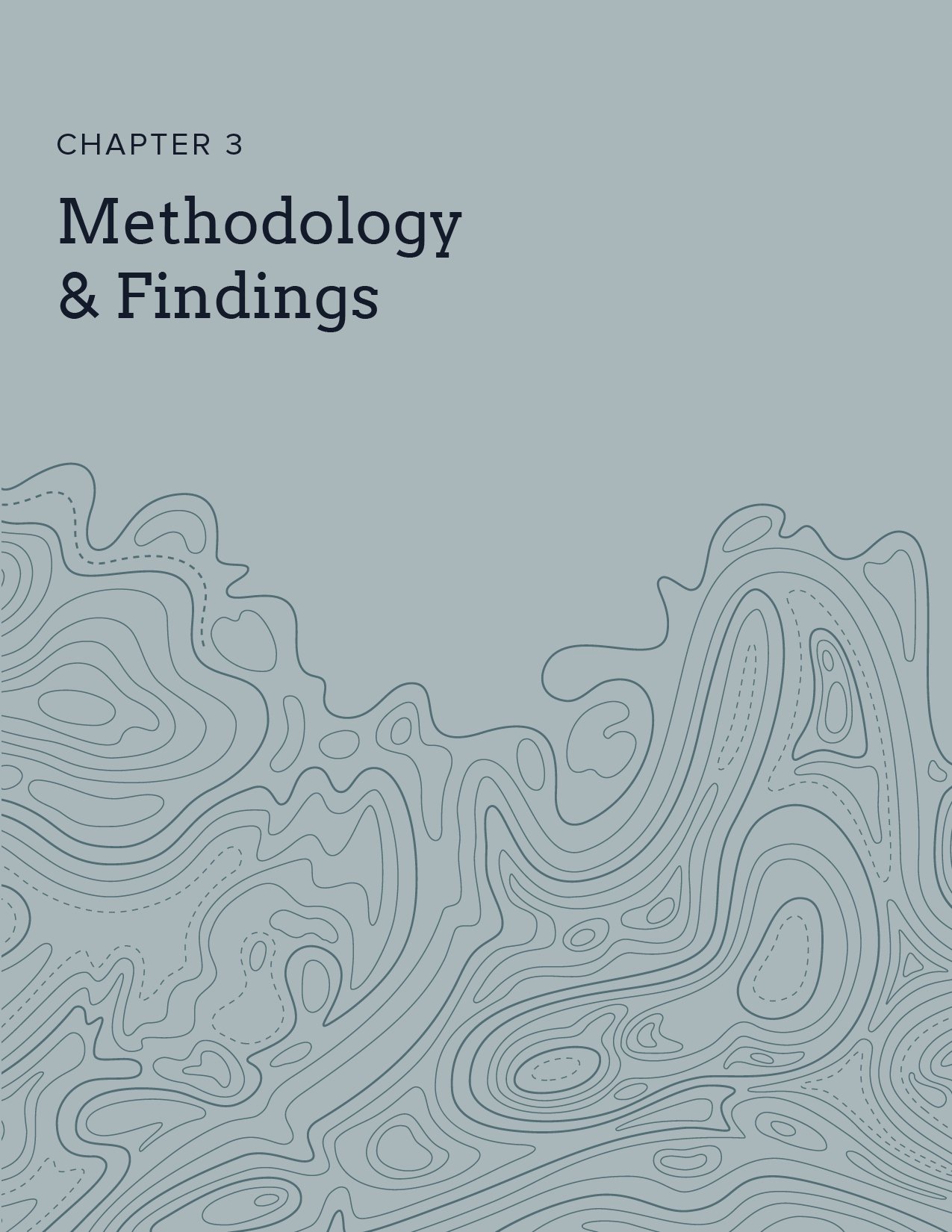
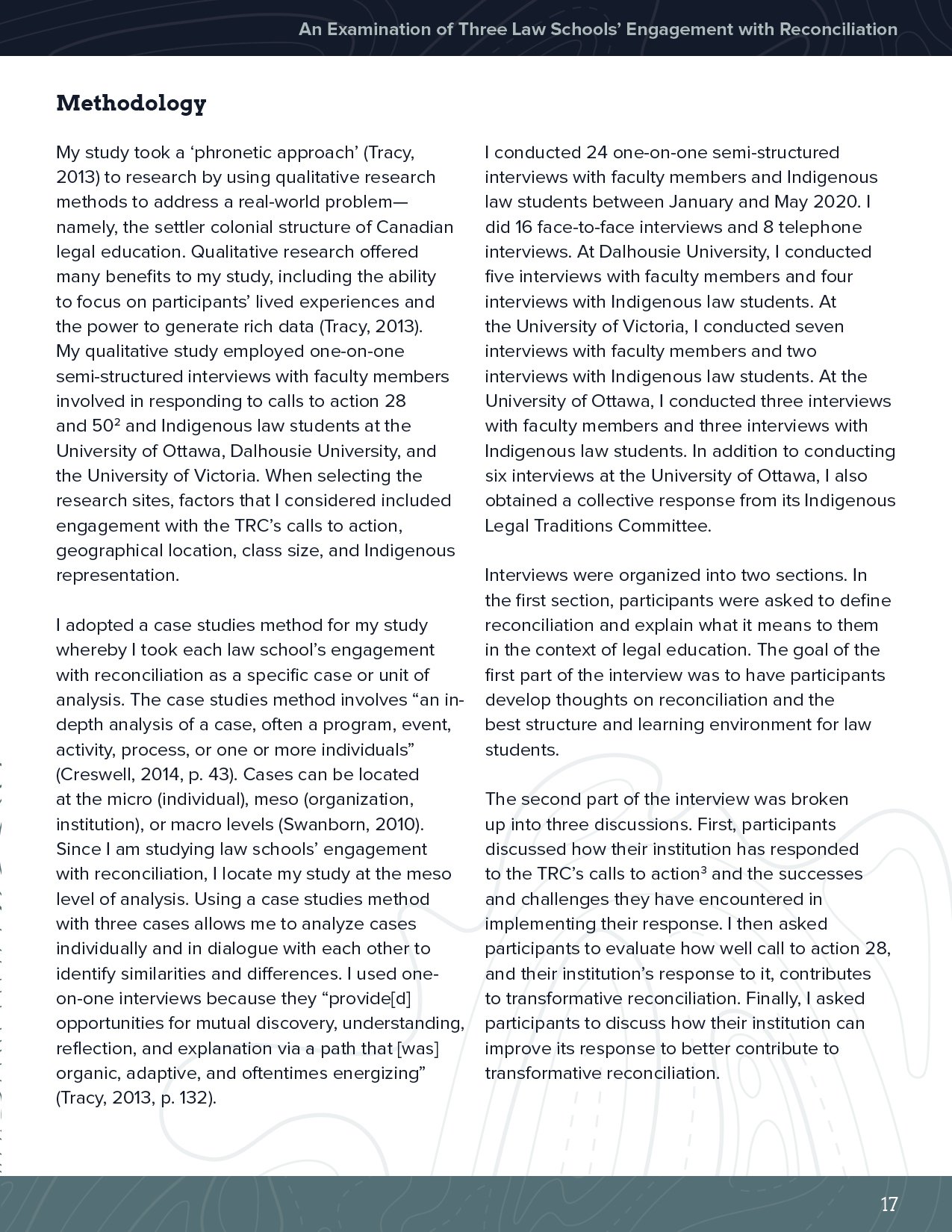

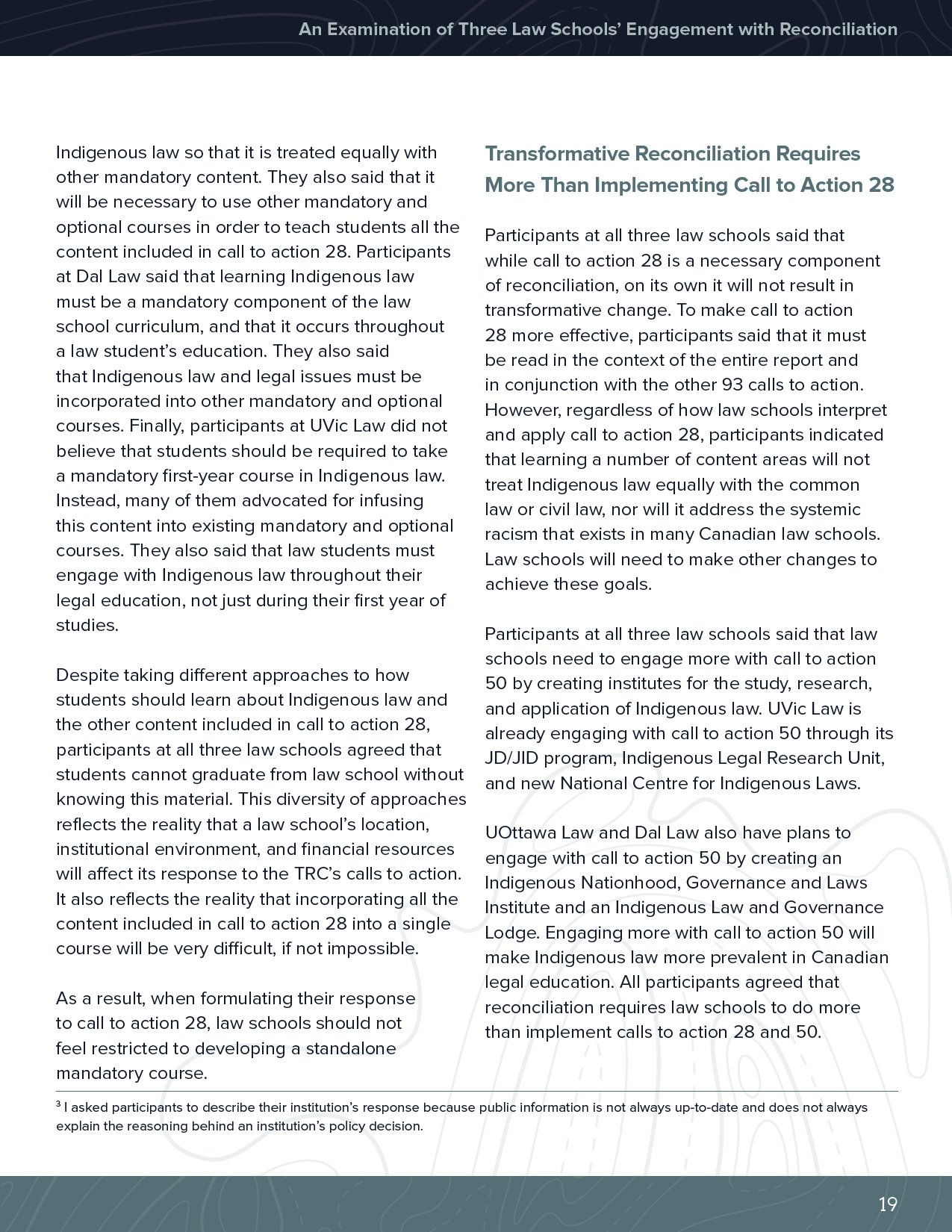
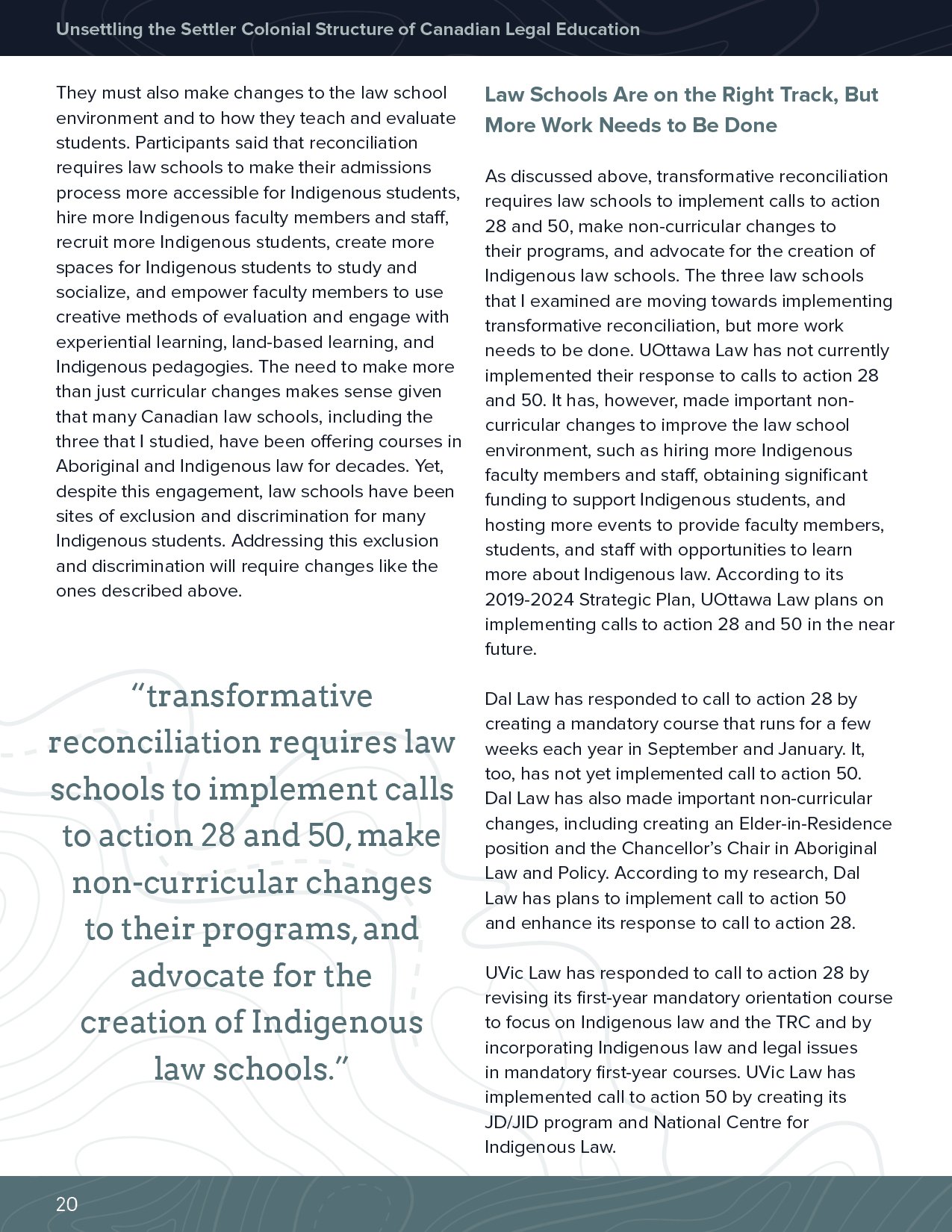
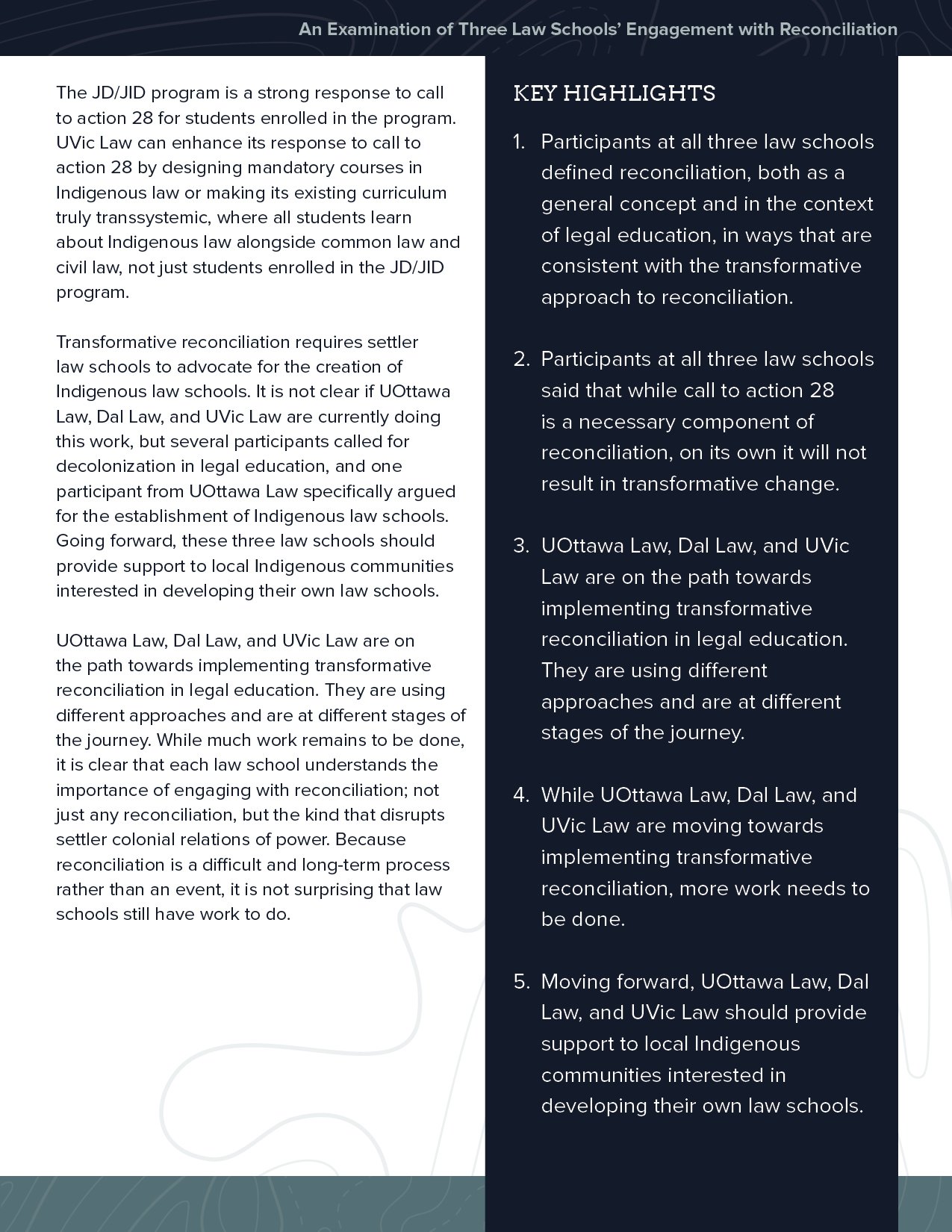
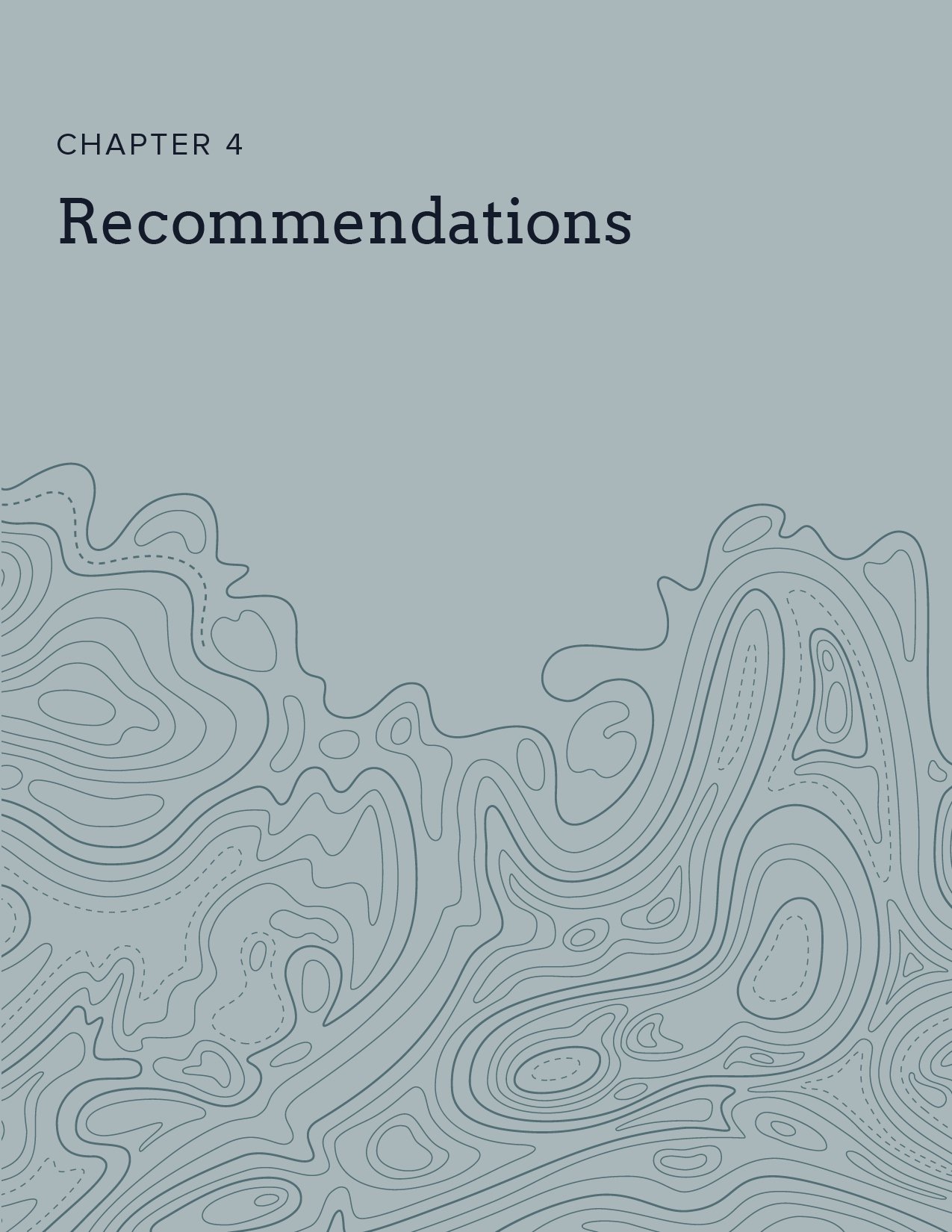

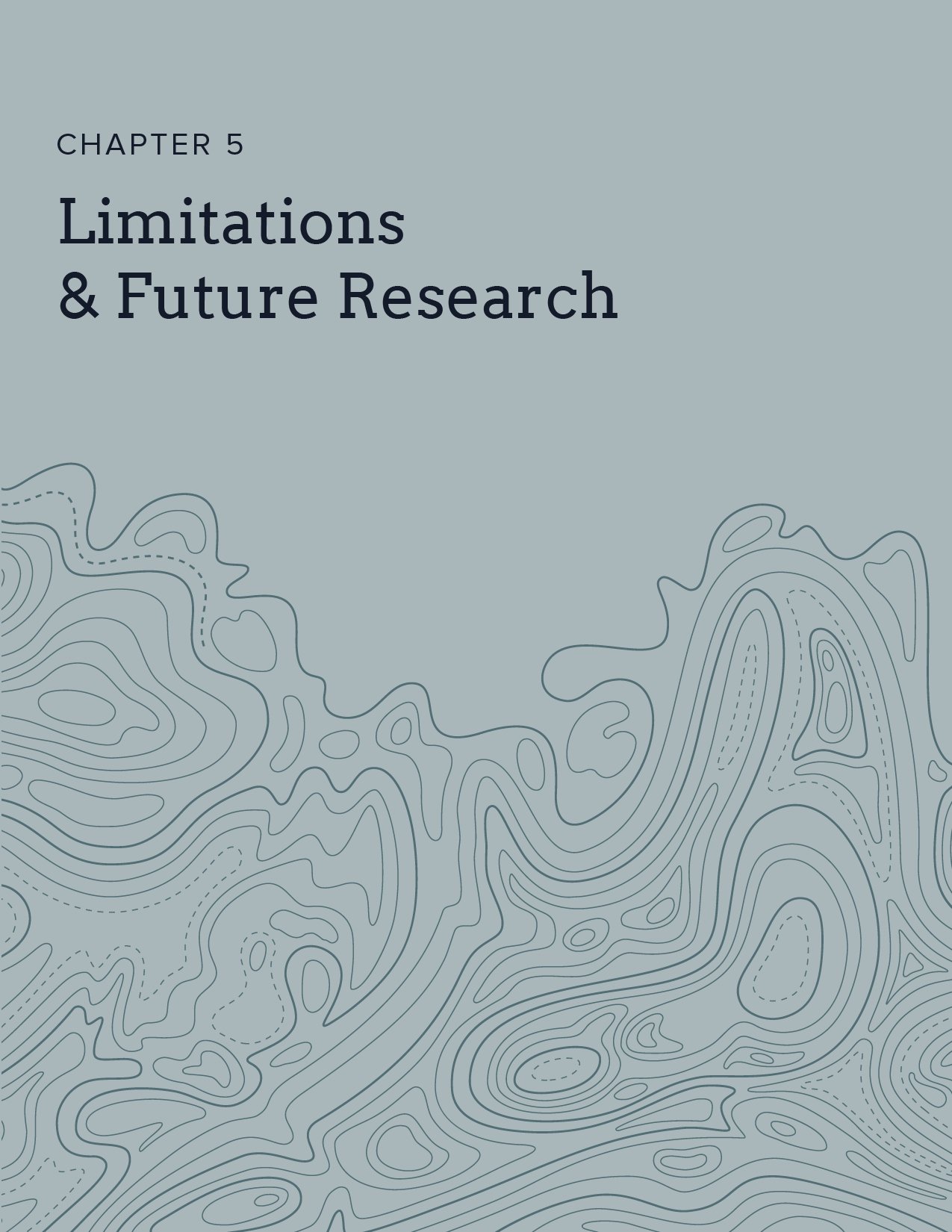
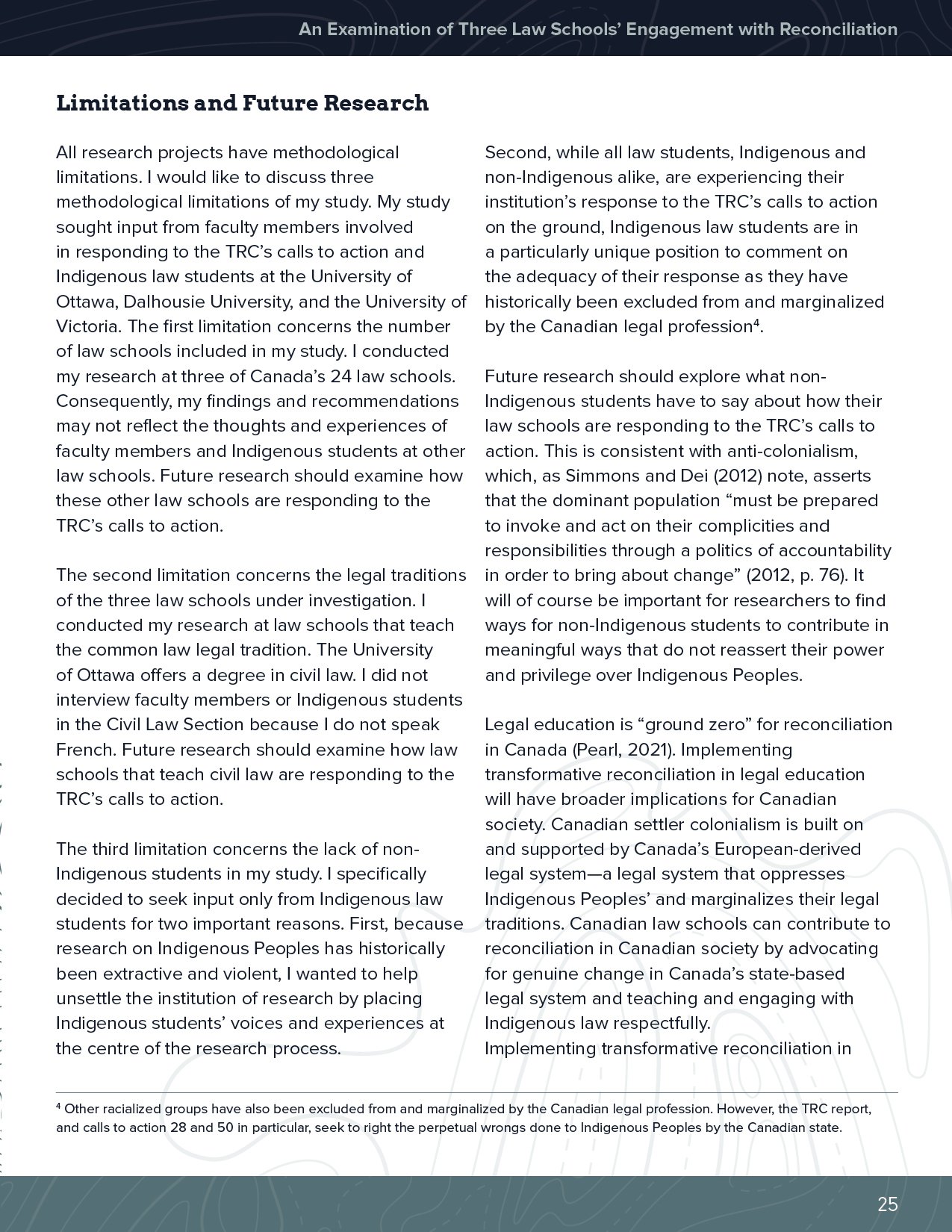
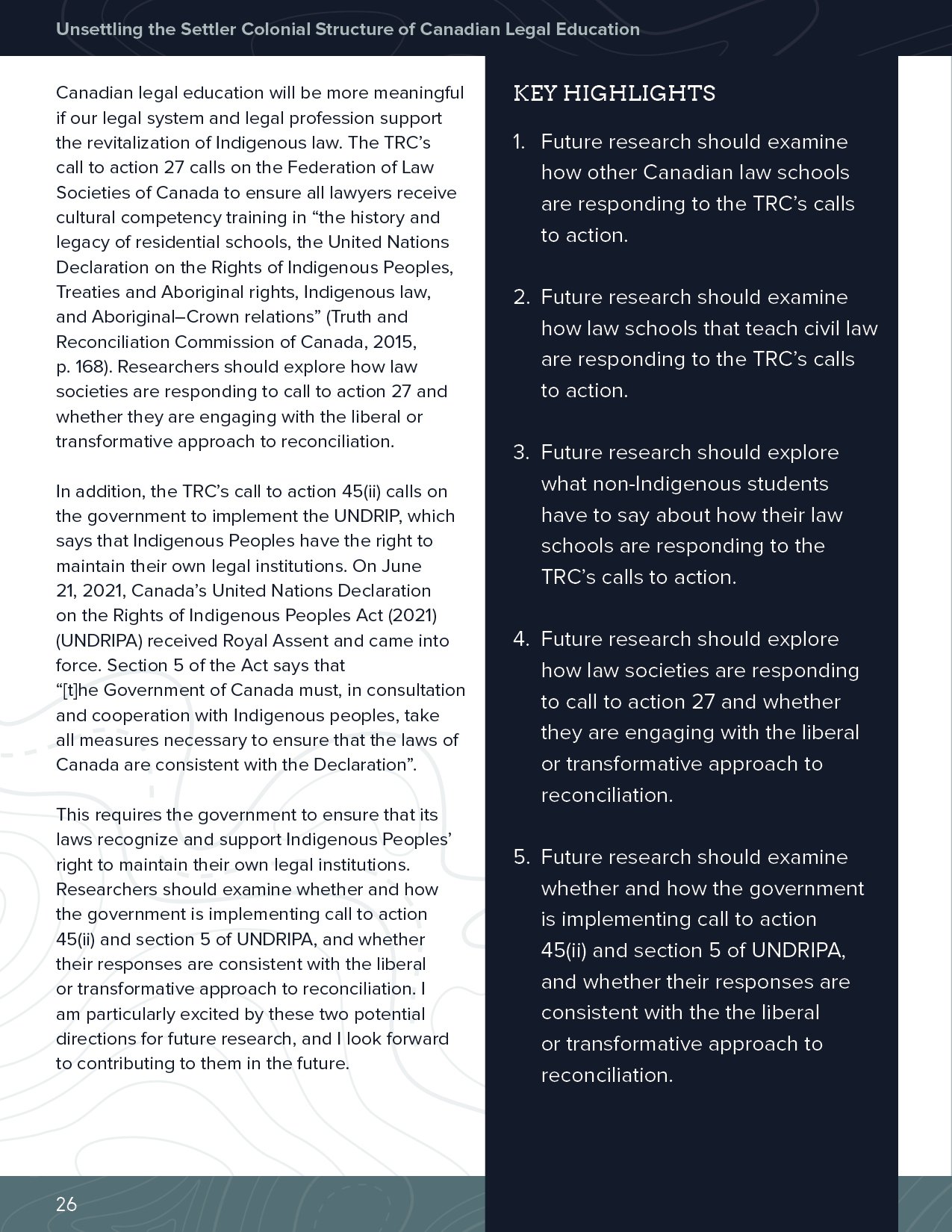
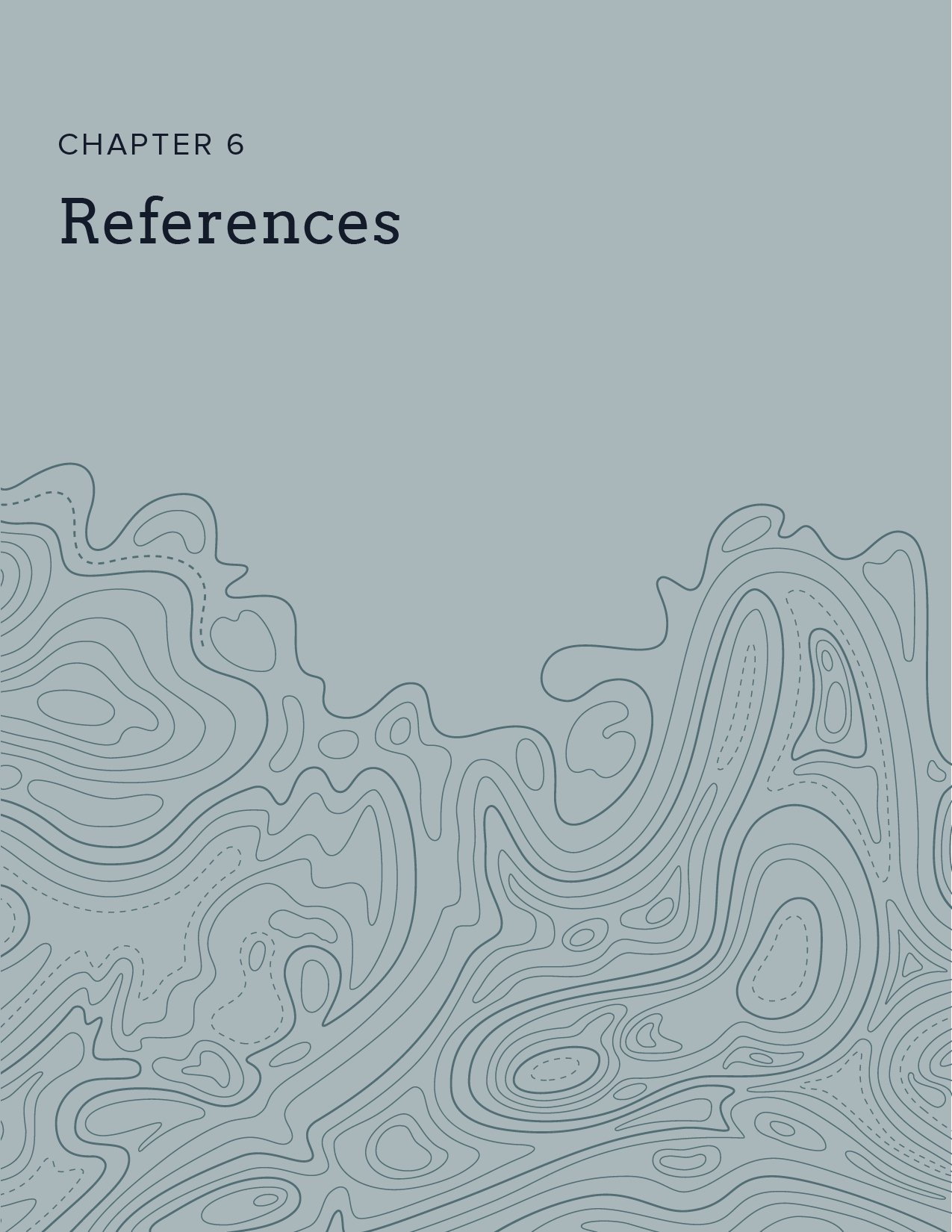
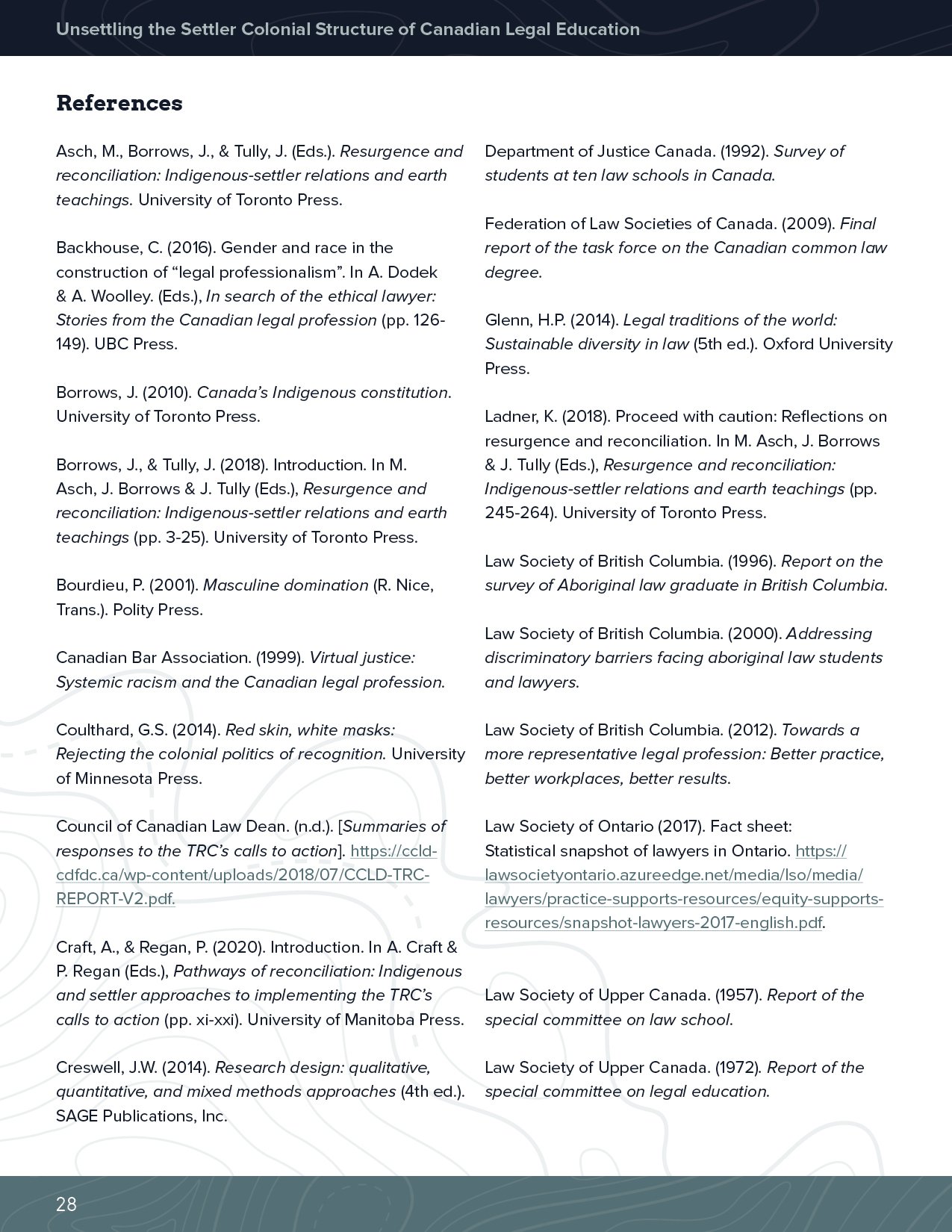
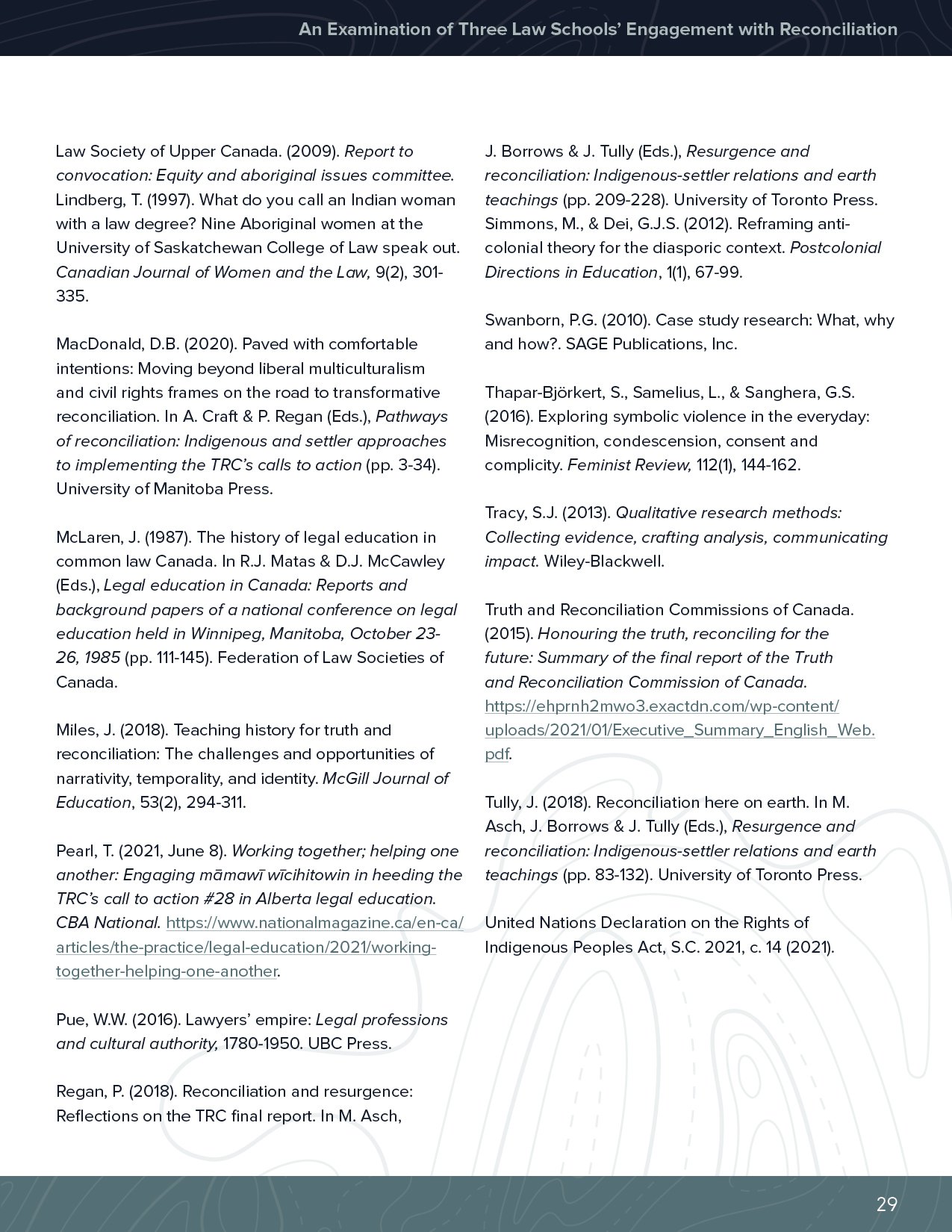
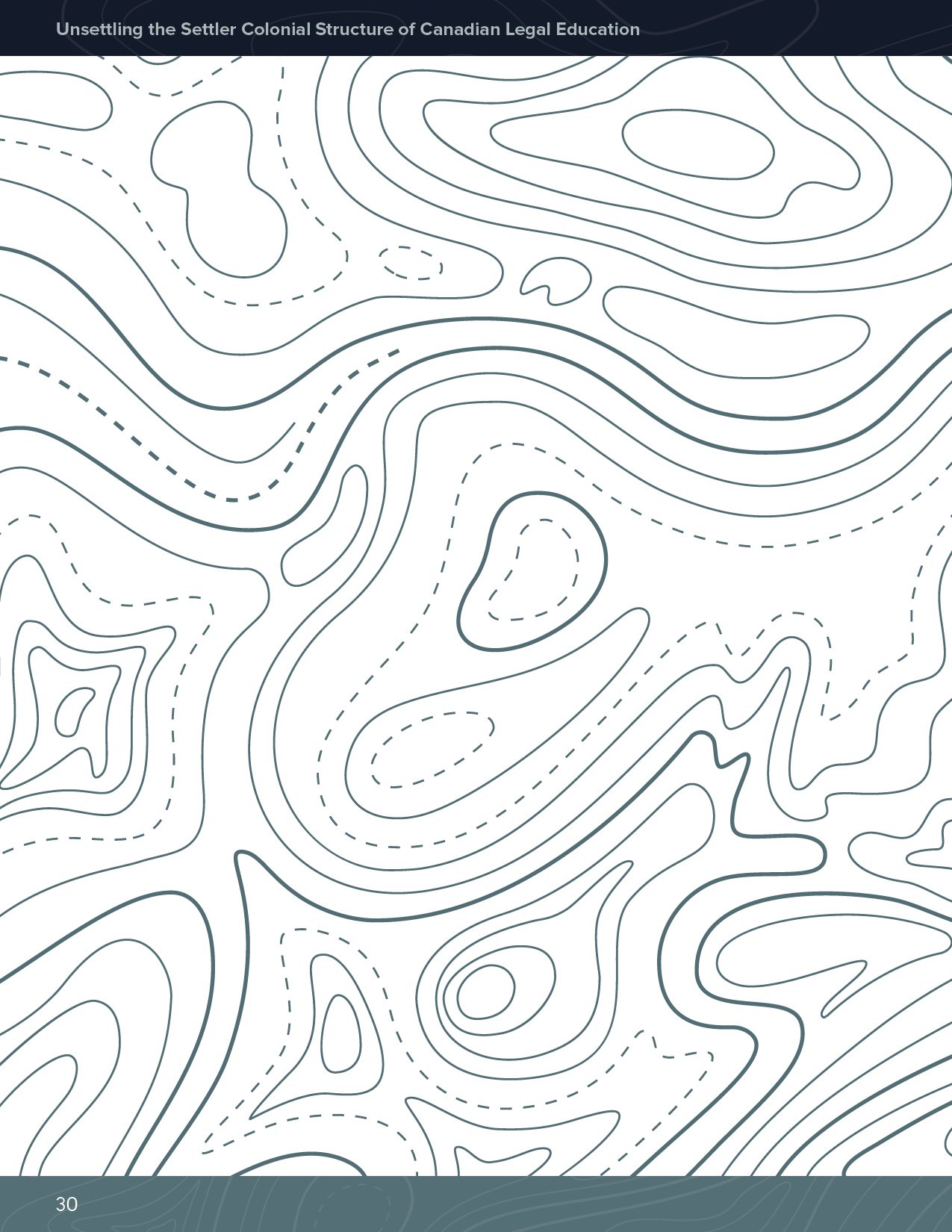
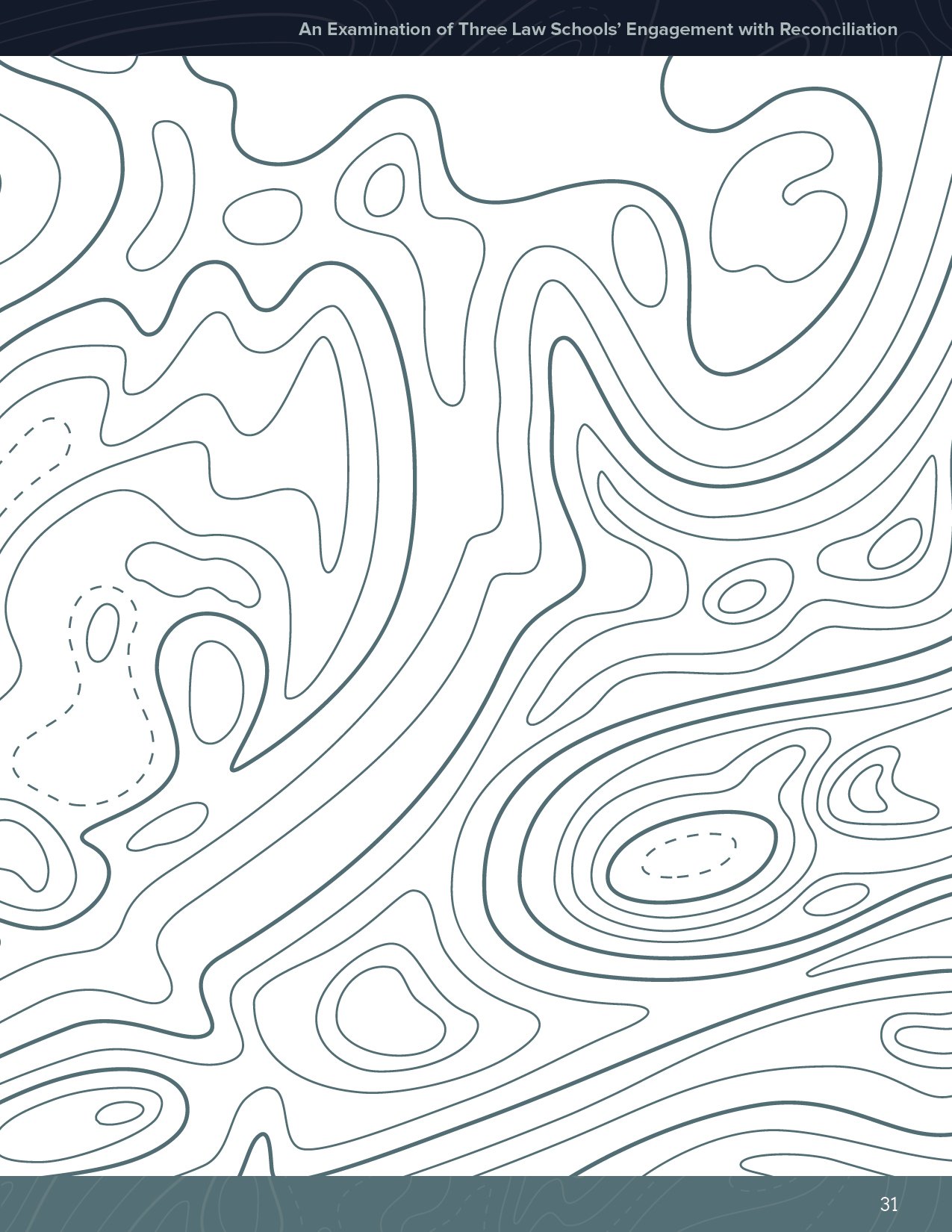

Services
Report Design
Indigenous-lens Consultation
Testimonial
“I had the wonderful opportunity of working with Katie to create a summary report of my doctoral research. Katie was a joy to work with. She’s organized, talented, and passionate about her work.
She met with me regularly to update me on the status of the project, and she reviewed the final version of the project with me to make sure I was happy with it. I highly recommend Katie to anyone looking for a skilled graphic designer and marketing consultant!”

